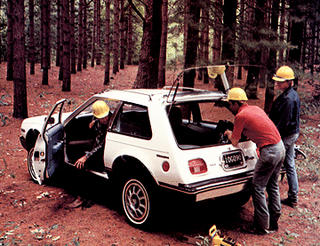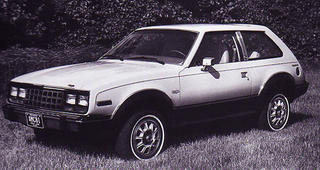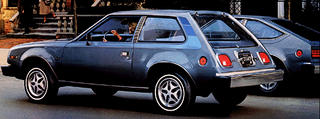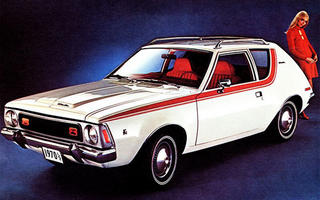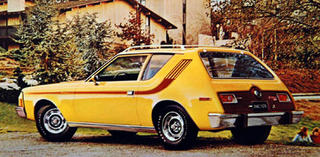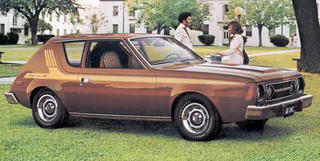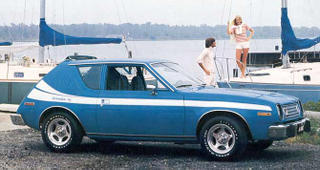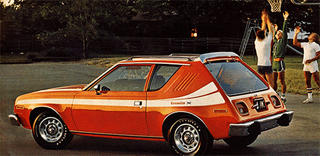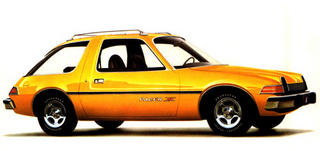
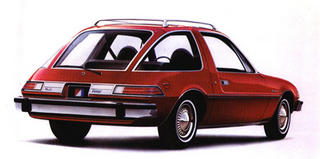
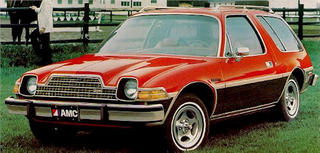

In the 70’s, AMC’s new way of thinking was the "AMC Philosophy of Difference". From this emerged a car that has come to be one of the largest automotive jokes around. Not that the car was a huge mechanical failure - it was just that it’s odd (or cute to some people) fugliness has gained it a reputation for being the car of losers, geeks and nerds since it’s inception.
It was apparently designed by placing four people in seats and designing the car around them to best accommodate their comfort and safety. This created a car that was only 100 inches long, but 80 inches wide. Theoretically this was the same concept that produced the Gremlin - a large car chassis shortened make and short but wide car. However, the Pacer’s body was refined in a wind tunnel to give it superior aerodynamics. But this happened to make it look like less of a half car like the Gremlin, but a gumdrop.
Other odd features: the passenger door was 4" longer than the driver's to let back seat passengers in more easily. Ford’s Windstar later adopted this idea, but the asymmetrical doors are more noticeable on this small, fishbowl like car. Engine choices were the same "fuel efficient" V6s of the Gremlin.
In 1977, a longer wheelbase wagon version of the Gremlin was added, which managed to look a little more awkward. Instead of a gumdrop it looked a little more like a time release pill. Sales were beginning to disappoint, and it was certain that AMC would not make the money off the Pacer to cover the tooling costs of creating it. Sales got lower every year since it’s introduction, and the wagon was an easy way of trying to create more sales.
Another last ditch effort was to transplant the 5.0L V8 from the Gremlin into the Pacer after people wishing for more power. However, it wouldn’t fit under the sleek hood of the Pacer. A new hood was made with a bulge for the V8, and front end styling was revised with a strange finicky grille with a pattern that mimicked that of Mercedes Benz’s of the era.
Production started in 1975 and 1980 was the final year of sale (although technically they were just 1979 models that weren’t sold in that model year). Although machincally and theoretically similar to the Gremlin, the Pacer had not nearly the fans or sales of it’s brother. Oddly enough - although they were claimed to be two difference cars, these engine/chassis/concept sharers also shared the "X" package, which offered similar stripe and rim packages.
As a last comment, I would like to refer to the posted (French) vintage advertisement of the Pacer. I love how the feces brown Pacer looks like it was just crapped out by the shocked and embarassed model. Either that or the pug fugly Pacer is humping her leg. Or that the Pacer just plain looks like a$$.


